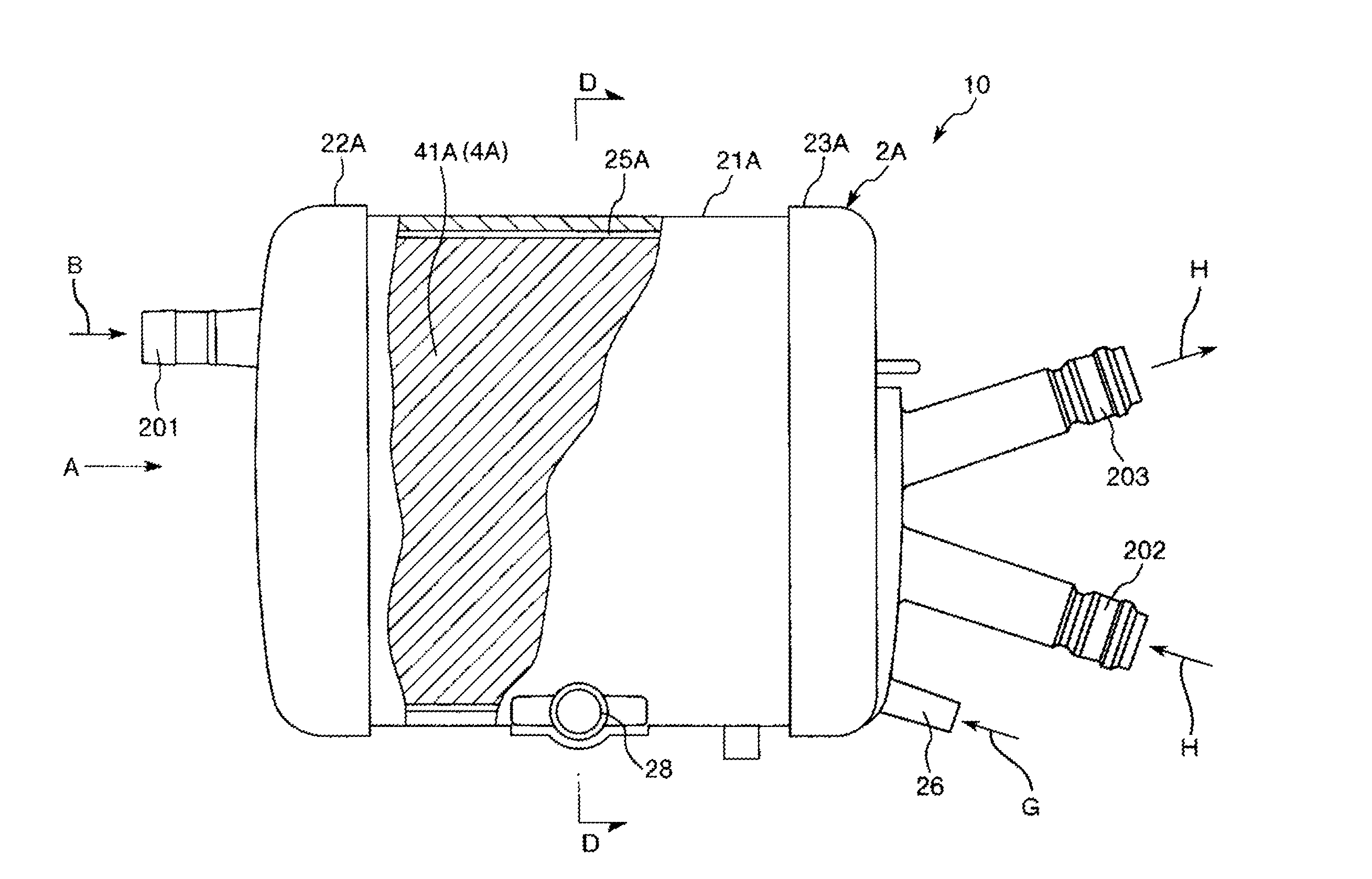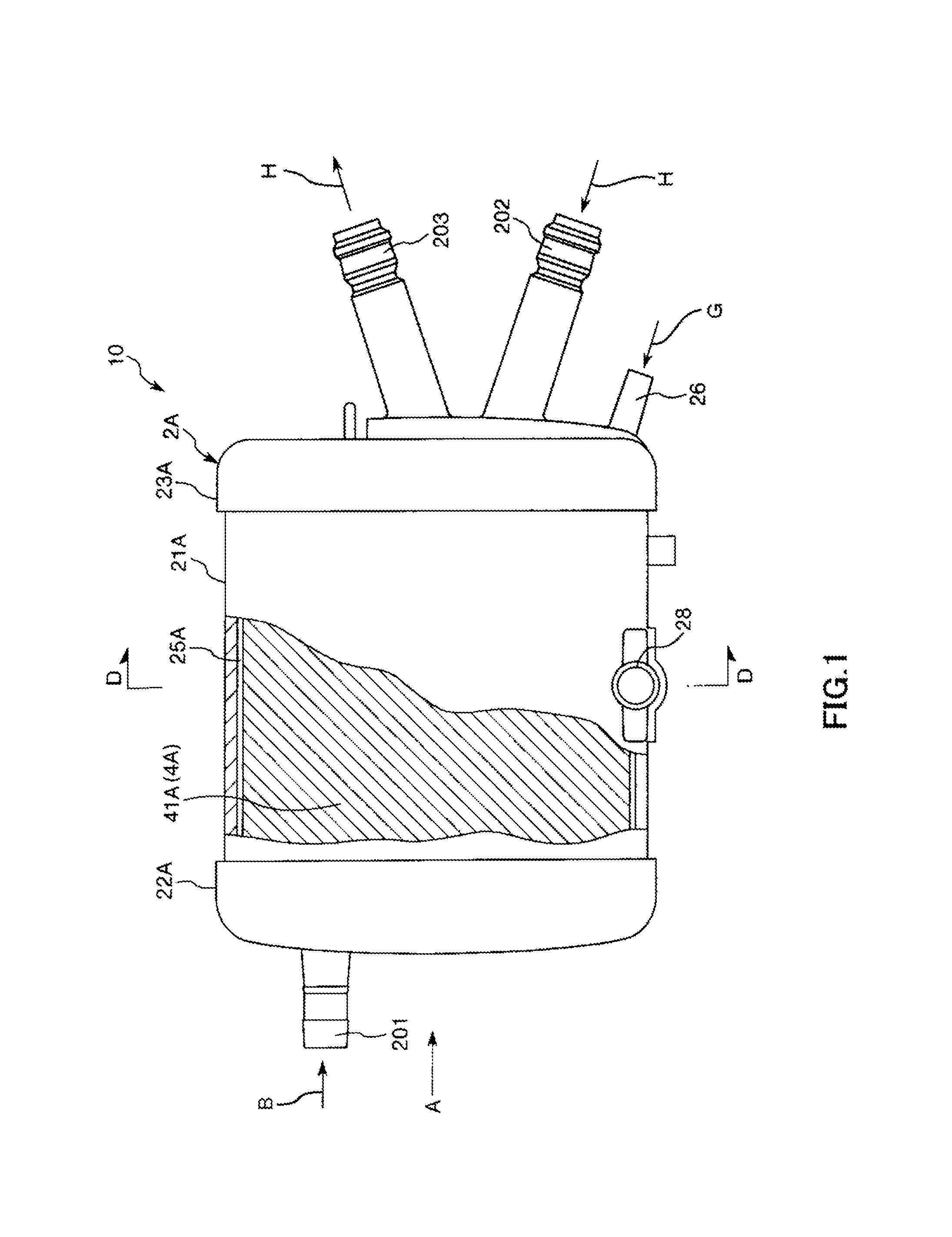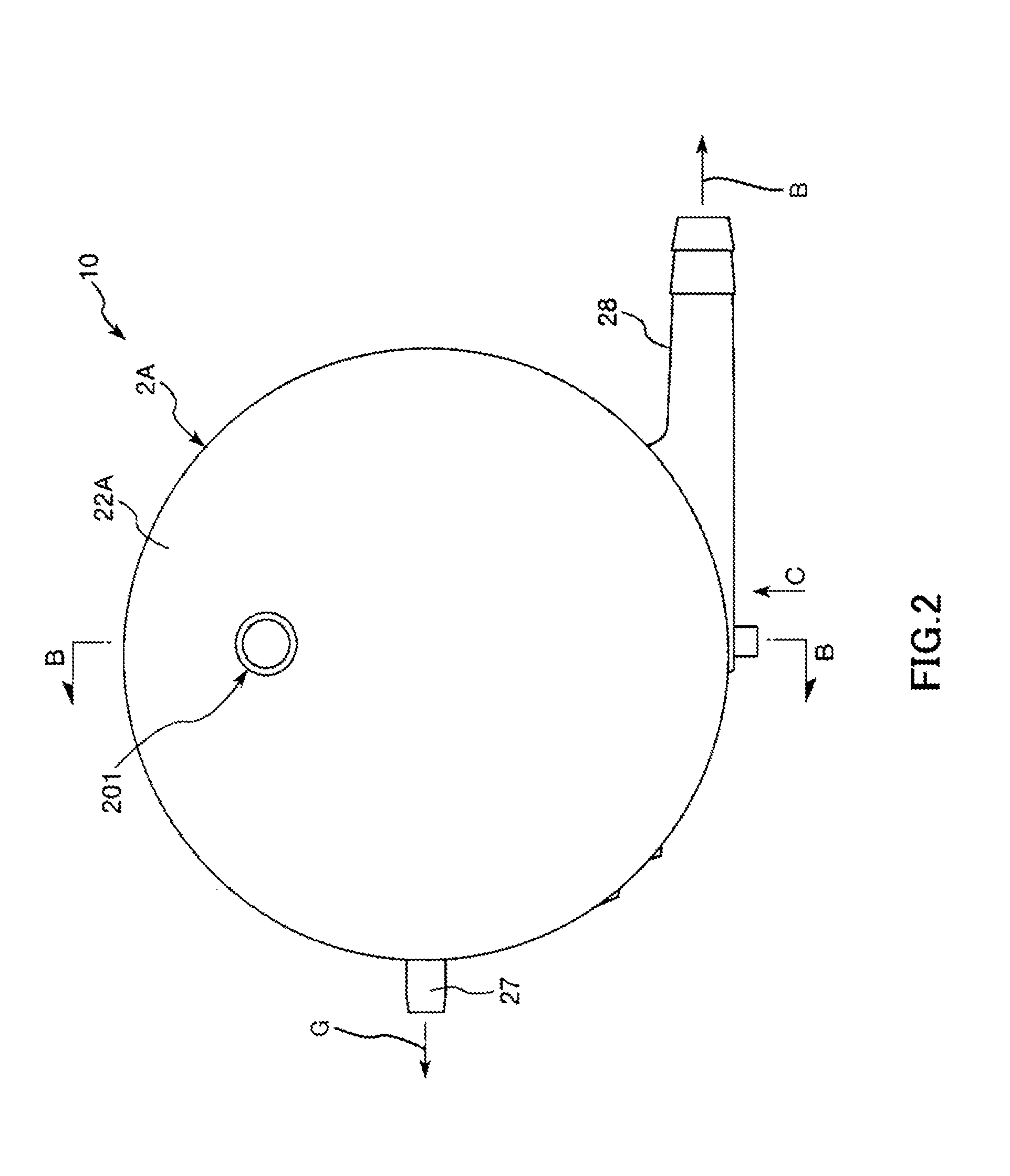Method of manufacturing heat exchanger and heat exchanger
a manufacturing method and heat exchanger technology, applied in indirect heat exchangers, lighting and heating devices, membranes, etc., can solve the problems of increasing reducing the efficiency of the heat exchanger, and reducing the overall length of the hollow fiber membrane for one round trip. , the effect of reducing the pressure loss of the heat medium passing through the hollow portion
- Summary
- Abstract
- Description
- Claims
- Application Information
AI Technical Summary
Benefits of technology
Problems solved by technology
Method used
Image
Examples
first embodiment
[0033]Note that, in FIGS. 1, 3, 4, and 7 to 10 (similar in FIGS. 11 and 16), the left side will be referred to as “left” or “left-hand side (one side)”, and the right side will be referred to as “right” or “right-hand side (the other side)”. In addition, in FIGS. 1 to 6 (similar in FIGS. 11 and 16), the inner side of the oxygenator will be described as “blood inlet side” or “upstream side”, and the outer side thereof will be described as “blood outlet side” or “downstream side”.
[0034]An oxygenator 10 illustrated in FIGS. 1 to 5 has an overall shape which is substantially columnar. The oxygenator 10 is equipped with a heat exchanger including a heat exchange section 10B which is provided on the inner side thereof and performs heat exchange with respect to blood, and an oxygenator section 10A as a gas exchange section which is provided on an outer circumferential side of the heat exchange section 10B and performs gas exchange with respect to blood. For example, the oxygenator 10 is us...
second embodiment
[0102]FIG. 12 is a view illustrating a fixed state of the hollow fiber membrane in the base material obtained through the method of manufacturing a heat exchanger of the present invention (second embodiment).
[0103]Hereinafter, with reference to the drawing, the second embodiment of the method of manufacturing a heat exchanger and the heat exchanger according to the present invention will be described. The points different from those in the above-described embodiment will be mainly described, and description of similar contents will be omitted.
[0104]The present embodiment is similar to the first embodiment except that the fixing method with respect to the hollow fiber membrane is different.
[0105]As illustrated in FIG. 12, in the present embodiment, a flexible fixing belt (belt-like body) 11A is used for fixing the turning-back point 312 of the hollow fiber membrane 31. The fixing belt 11A has a width wider than that of the fixing string 11. Due to the fixing belt 11A, when the portio...
third embodiment
[0107]FIG. 13 is a view illustrating a fixed state of the hollow fiber membrane in the base material obtained through the method of manufacturing a heat exchanger of the present invention in a third embodiment.
[0108]Hereinafter, with reference to the drawing, the third embodiment of the method of manufacturing a heat exchanger and the heat exchanger according to the present invention will be described. The points different from those in the above-described embodiments will be mainly described, and description of similar contents will be omitted.
[0109]The present embodiment is similar to the first embodiment except that the fixing method with respect to the hollow fiber membrane is different.
[0110]As illustrated in FIG. 13, in the present embodiment, the portion in the vicinity of the turning-back point 312 of the hollow fiber membrane 31 is fixed as follows.
[0111]First, a dryer 12 is prepared. An exhaust port 121 of the dryer 12 is oriented toward the portion in the vicinity of the ...
PUM
| Property | Measurement | Unit |
|---|---|---|
| outer diameter | aaaaa | aaaaa |
| outer diameter | aaaaa | aaaaa |
| flexible | aaaaa | aaaaa |
Abstract
Description
Claims
Application Information
 Login to View More
Login to View More - R&D
- Intellectual Property
- Life Sciences
- Materials
- Tech Scout
- Unparalleled Data Quality
- Higher Quality Content
- 60% Fewer Hallucinations
Browse by: Latest US Patents, China's latest patents, Technical Efficacy Thesaurus, Application Domain, Technology Topic, Popular Technical Reports.
© 2025 PatSnap. All rights reserved.Legal|Privacy policy|Modern Slavery Act Transparency Statement|Sitemap|About US| Contact US: help@patsnap.com



